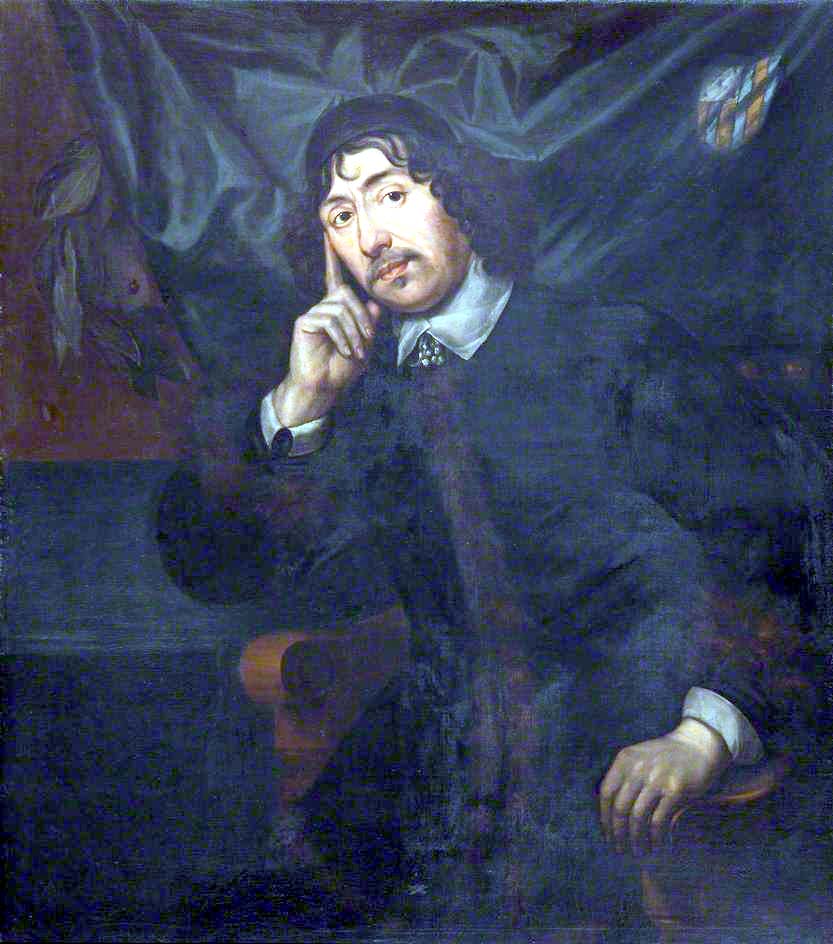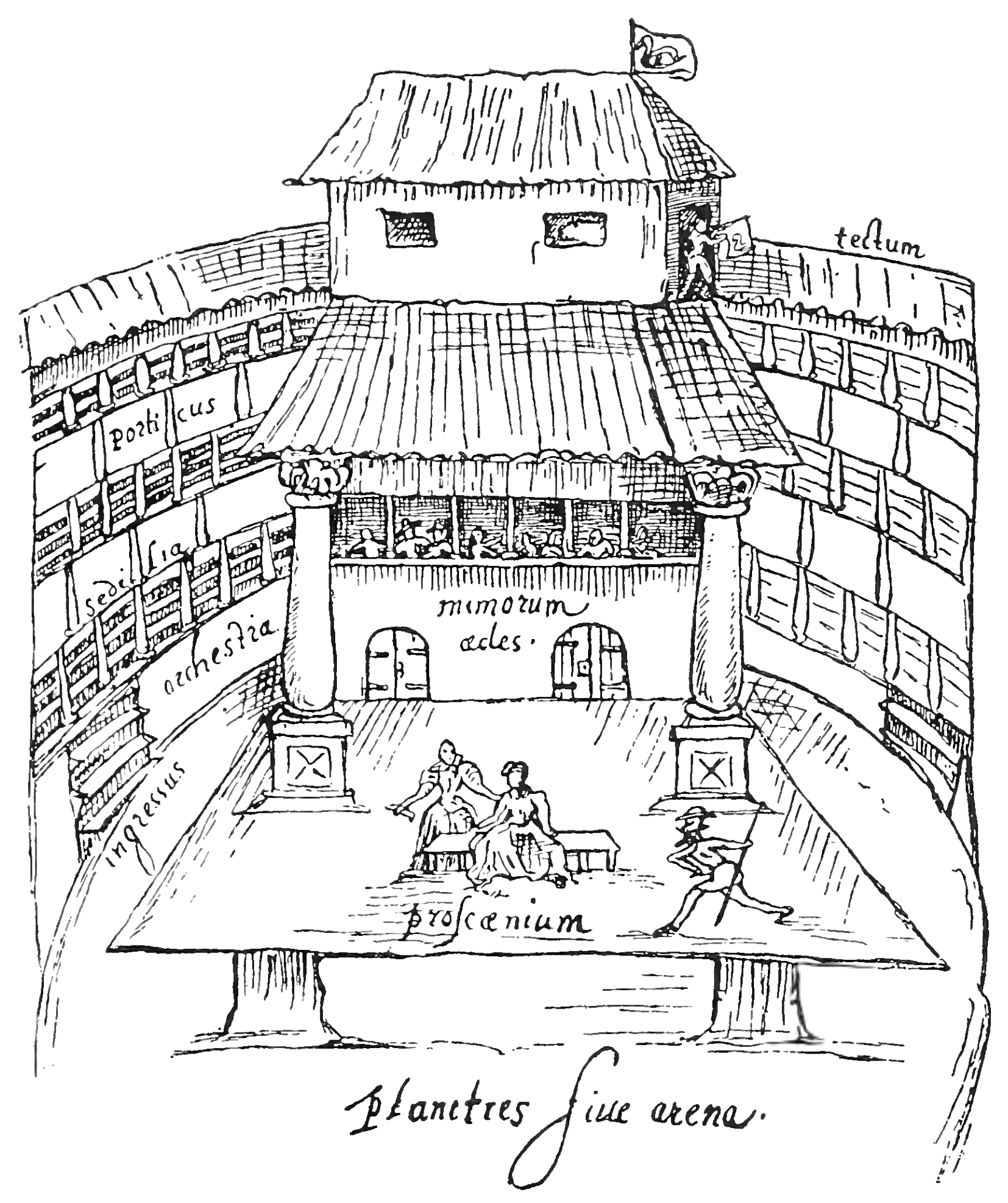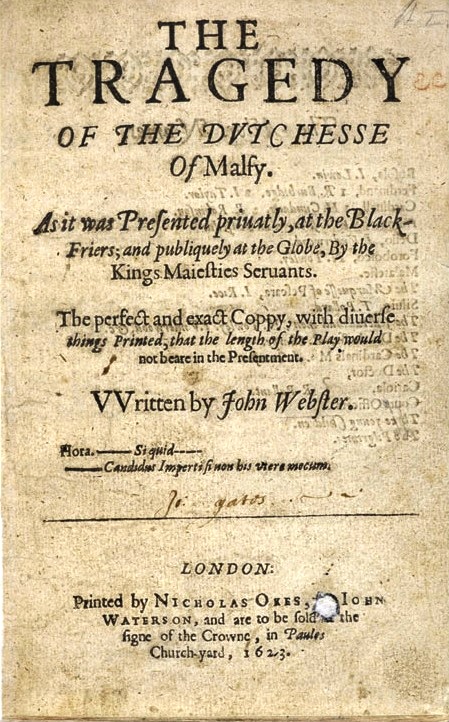|
The Renegado
''The Renegado, or The Gentleman of Venice'' is a late Literature in English#Jacobean literature, Jacobean stage play, a tragicomedy written by Philip Massinger and first published in 1630 in literature, 1630. The play has attracted critical attention for its treatment of cultural conflict between Christian Europe and Muslim North Africa. Massinger based the plot of his play on a novel by Miguel de Cervantes titled ''Los Baños de Argel,'' which had been printed in 1615 in literature, 1615. Performance and publication ''The Renegado'' was licensed for performance by Sir Henry Herbert (Master of the Revels), Henry Herbert, the Master of the Revels, on 17 April 1624 in literature, 1624. It was acted at the Cockpit Theatre by the Lady Elizabeth's Men; when that troupe was merged or re-organized into Queen Henrietta's Men in the following year, 1625 in literature, 1625, the play remained in their repertory. The 1630 book size, quarto was printed by Augustine Matthews for the booksell ... [...More Info...] [...Related Items...] OR: [Wikipedia] [Google] [Baidu] |
James Shirley
James Shirley (or Sherley) (September 1596 – October 1666) was an English dramatist. He belonged to the great period of English dramatic literature, but, in Charles Lamb's words, he "claims a place among the worthies of this period, not so much for any transcendent genius in himself, as that he was the last of a great race, all of whom spoke nearly the same language and had a set of moral feelings and notions in common." His career of play writing extended from 1625 to the suppression of stage plays by Parliament in 1642. Biography Early life Shirley was born in London and was descended from the Shirleys of Warwick, the oldest knighted family in Warwickshire. He was educated at Merchant Taylors' School, London, St John's College, Oxford, and St Catharine's College, Cambridge, where he took his BA degree in or before 1618. His first poem, ''Echo, or the Unfortunate Lovers'' was published in 1618; no copy of it is known, but it is probably the same as 1646's ''Narcissus ... [...More Info...] [...Related Items...] OR: [Wikipedia] [Google] [Baidu] |
John Waterson
John Waterson (died 10 February 1656) was a London publisher and bookseller of the Jacobean and Caroline eras; he published significant works in English Renaissance drama, including plays by William Shakespeare, John Fletcher, John Webster, and Philip Massinger. Beginning Waterson was the scion of a family of publishers: his grandfather Richard and his father Simon were both in the book trade. Simon Waterson (1585–1634) was also the brother-in-law of William Ponsonby, the prominent publisher of Edmund Spenser and Sir Philip Sidney; when Ponsonby died in 1604, Simon acquired many of Ponsonby's copyrights. John Waterson became a "freeman" (a full member) of the Stationers Company on 27 June 1620, and soon after was an active independent publisher. He took over the management of his father's shop, at the sign of the Crown at Cheap Gate in St. Paul's Churchyard. (Simon Waterson is thought to have gone into semi-retirement when his son took over, though his name appeared on ... [...More Info...] [...Related Items...] OR: [Wikipedia] [Google] [Baidu] |
Hannibal And Scipio
''Hannibal and Scipio'' is a Caroline era stage play, a classical tragedy written by Thomas Nabbes. The play was first performed in 1635 by Queen Henrietta's Men, and was first published in 1637. The first edition of the play contained a cast list of the original production, making the 1637 quarto an important information source on English Renaissance theatre. Literary connections As its title indicates, the play relates the historical rivalry between Hannibal and Scipio Africanus. Out of the vast array of historical source material on the subject, Nabbes relied primarily upon the account of the Second Punic War given by Livy in his history of Rome, ''Ab Urbe condita'', and upon Plutarch's ''Lives of Hannibal and Scipio.'' Earlier English plays on the subject had been written and acted. A ''Scipio Africanus,'' author unknown, was staged at the English Court on 3 January 1580; a ''Hannibal and Hermes'' by Thomas Dekker, Michael Drayton, and Robert Wilson dated from 1598; it w ... [...More Info...] [...Related Items...] OR: [Wikipedia] [Google] [Baidu] |
The Fair Maid Of The West
''The Fair Maid of the West, or a Girl Worth Gold, Parts 1 and 2'' is a work of English Renaissance drama, a two-part play written by Thomas Heywood that was first published in 1631. Date The dates of authorship of the two parts of ''The Fair Maid of the West'' are not known with certainty. ''Part 1'' involves historical events of 1596 and 1597, and refers to Queen Elizabeth I in terms suggesting she was still alive at the time of its authorship; scholars therefore date ''Part 1'' to the 1597–1603 period. Significant differences in tone between the two parts suggest that they were written separately, perhaps widely separately, in time: "What slight evidence there is...indicates that Heywood wrote Part II some twenty-five or thirty years after Part I." Publication The drama was entered into the Stationers' Register on 16 June 1631; later that year, both parts were published together, in a quarto by the bookseller Richard Royston. The volume may have been typeset in the shop ... [...More Info...] [...Related Items...] OR: [Wikipedia] [Google] [Baidu] |
English Renaissance Theatre
English Renaissance theatre, also known as Renaissance English theatre and Elizabethan theatre, refers to the theatre of England between 1558 and 1642. This is the style of the plays of William Shakespeare, Christopher Marlowe and Ben Jonson. Background The term ''English Renaissance theatre'' encompasses the period between 1562—following a performance of ''Gorboduc'', the first English play using blank verse, at the Inner Temple during the Christmas season of 1561—and the ban on theatrical plays enacted by the English Parliament in 1642. In a strict sense "Elizabethan" only refers to the period of Queen Elizabeth's reign (1558–1603). ''English Renaissance theatre'' may be said to encompass ''Elizabethan theatre'' from 1562 to 1603, '' Jacobean theatre'' from 1603 to 1625, and '' Caroline theatre'' from 1625 to 1642. Along with the economics of the profession, the character of the drama changed towards the end of the period. Under Elizabeth, the drama was a unified ... [...More Info...] [...Related Items...] OR: [Wikipedia] [Google] [Baidu] |
English Restoration
The Restoration of the Stuart monarchy in the kingdoms of England, Scotland and Ireland took place in 1660 when King Charles II returned from exile in continental Europe. The preceding period of the Protectorate and the civil wars came to be known as the Interregnum (1649–1660). The term ''Restoration'' is also used to describe the period of several years after, in which a new political settlement was established. It is very often used to cover the whole reign of King Charles II (1660–1685) and often the brief reign of his younger brother King James II (1685–1688). In certain contexts it may be used to cover the whole period of the later Stuart monarchs as far as the death of Queen Anne and the accession of the Hanoverian King George I in 1714. For example, Restoration comedy typically encompasses works written as late as 1710. The Protectorate After Richard Cromwell, Lord Protector from 1658 to 1659, ceded power to the Rump Parliament, Charles Fleetwood and J ... [...More Info...] [...Related Items...] OR: [Wikipedia] [Google] [Baidu] |
1662 In Literature
This article contains information about the literary events and publications of 1662. Events *February 15 – The first performance of Sir William Davenant's '' The Law Against Lovers'' – the first Restoration adaptation of Shakespeare, consisting of an amalgam of ''Measure for Measure'' and ''Much Ado About Nothing'' – is given by the Duke's Company at its new theater in Lincoln's Inn Fields, London. *September 29 – Samuel Pepys in his diary calls the King's Company production of ''A Midsummer Night's Dream'' in London "the most insipid, ridiculous play that ever I saw in my life." *October 18 – John Ogilby, Master of the Revels in Ireland, opens the first Theatre Royal, Dublin, in Smock Alley. *December 26 – The première of Molière's comedy ''The School for Wives (L'École des femmes)'' is held at the Théâtre du Palais-Royal (rue Saint-Honoré) in Paris. *''unknown dates'' **Two ''autos sacramentales'' by Pedro Calderón de la Barca – ''Las órdenes militares'' ... [...More Info...] [...Related Items...] OR: [Wikipedia] [Google] [Baidu] |
1623 In Literature
This article contains information about the literary events and publications of 1623. Events *February 2 (Candlemas) – The King's Men perform ''Twelfth Night'' (under the alternative title ''Malvolio'') at the court of King James I of England. *February 28 – John Hacket's Latin comedy ''Loiola'' is staged at Trinity College, Cambridge, and repeated on March 12 for King James I of England on his third visit to the university. The play mocks both Catholics, in the person of Ignatius Loyola, and Calvinists, who are represented by Martinus, a canting elder of Amsterdam. *June 29 – Pedro Calderón de la Barca makes his debut as a playwright, his ' (''Love, Honor and Power'') being performed at the Spanish Court. Two other plays follow this year. *July 20 – Henry Herbert (Sir Henry from August) becomes deputy to Sir John Ashley, Master of the Revels and takes over his duties. Herbert effectively controls professional drama in England from 1623 until the theaters close in 164 ... [...More Info...] [...Related Items...] OR: [Wikipedia] [Google] [Baidu] |
The Duchess Of Malfi
''The Duchess of Malfi'' (originally published as ''The Tragedy of the Dutchesse of Malfy'') is a Jacobean revenge tragedy written by English dramatist John Webster in 1612–1613. It was first performed privately at the Blackfriars Theatre, then later to a larger audience at The Globe, in 1613–1614. Published in 1623, the play is loosely based on events that occurred between 1508 and 1513 surrounding Giovanna d'Aragona, Duchess of Amalfi (d. 1511), whose father, Enrico d'Aragona, Marquis of Gerace, was an illegitimate son of Ferdinand I of Naples. As in the play, she secretly married Antonio Beccadelli di Bologna after the death of her first husband Alfonso I Piccolomini, Duke of Amalfi. The play begins as a love story, when the Duchess marries beneath her class, and ends as a nightmarish tragedy as her two brothers undertake their revenge, destroying themselves in the process. Jacobean drama continued the trend of stage violence and horror set by Elizabethan tragedy, u ... [...More Info...] [...Related Items...] OR: [Wikipedia] [Google] [Baidu] |
John Webster
John Webster (c. 1580 – c. 1632) was an English Jacobean dramatist best known for his tragedies '' The White Devil'' and ''The Duchess of Malfi'', which are often seen as masterpieces of the early 17th-century English stage. His life and career overlapped with Shakespeare's. Biography Webster's life is obscure and the dates of his birth and death are not known. His father, a carriage maker also named John Webster, married a blacksmith's daughter named Elizabeth Coates on 4 November 1577 and it is likely that Webster was born not long after, in or near London. The family lived in St Sepulchre's parish. His father John and uncle Edward were Freemen of the Merchant Taylors' Company and Webster attended Merchant Taylors' School in Suffolk Lane, London. On 1 August 1598, "John Webster, lately of the New Inn" was admitted to the Middle Temple, one of the Inns of Court; in view of the legal interests evident in his dramatic work, this may be the playwright. Webster married 17-year-o ... [...More Info...] [...Related Items...] OR: [Wikipedia] [Google] [Baidu] |
1621 In Literature
Events from the year 1621 in literature. Events *January 27 – Sir Francis Bacon is created Viscount St Alban. *February 3 – John Chamberlain writes to Sir Dudley Carleton telling him the anonymous author of the tract ''Vox Populi'' has been revealed to be the radical preacher Thomas Scott. *May 3 – Sir Francis Bacon is imprisoned in the Tower of London after being convicted of receiving bribes, but pardoned by King James I later in the year. *August 26 – Barten Holyday's allegorical play ''Technogamia'', originally produced at Christ Church, Oxford in 1618, is staged before James I at Woodstock Palace. He dislikes it, but is persuaded to stay to the end for the student actors' sakes. *September 24 – The earliest known copy of the ''Corante'', generally regarded as the first English newspaper, is published. *November 22 – The English poet John Donne is installed as Dean of St Paul's Cathedral in London. *December 30 – The Spanish writer Francisco de Borja y Arag� ... [...More Info...] [...Related Items...] OR: [Wikipedia] [Google] [Baidu] |
The Anatomy Of Melancholy
''The Anatomy of Melancholy'' (full title: ''The Anatomy of Melancholy, What it is: With all the Kinds, Causes, Symptomes, Prognostickes, and Several Cures of it. In Three Maine Partitions with their several Sections, Members, and Subsections. Philosophically, Medicinally, Historically, Opened and Cut Up'') is a book by Robert Burton, first published in 1621, but republished five more times over the next seventeen years with massive alterations and expansions. Overview On its surface, the book is presented as a medical textbook in which Burton applies his vast and varied learning, in the scholastic manner, to the subject of melancholia (or clinical depression). Although presented as a medical text, ''The Anatomy of Melancholy'' is as much a ''sui generis'' (unique) work of literature as it is a scientific or philosophical text, as Burton covers far more than the nomitive subject. ''Anatomy'' uses melancholy as a lens through which all human emotion and thought may be scrutinize ... [...More Info...] [...Related Items...] OR: [Wikipedia] [Google] [Baidu] |




